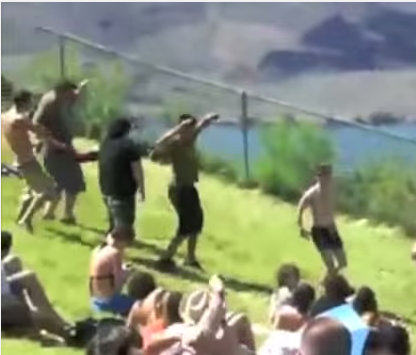A typical set of curbside recycling instructions can leave residents confused. At this year’s California Resource Recovery Association/SWANA conference in San Jose, Gigantic Idea Studio presented an alternative approach: make it bite-sized.
To kick off our session on behavior change outreach and food waste diversion, Wendy Wondersort (aka our own Stefanie Pruegel) hosted the Sorting Game, with NorCal competing against SoCal to win the coveted Golden Pizza Slice. One team was given a long, complicated list of recycling instructions. The other received more straightforward directions. Can you guess who won?

The Sorting Game helped us demonstrate how too many messages can lead to poor recycling outcomes. To show a real-world example, we presented the concept and results of a single material outreach campaign conducted with our partners at the City of Livermore earlier this year. This “bite sized” campaign focused on one material – pizza boxes – and used multiple tactics to reach residents. The simple instruction: pizza boxes go in the green cart.
To make our outreach message memorable, we created a “story line,” where Binny, the hungry green Organics cart, visits with a Livermore family as a dinner guest and craves the delicious pizza box once the family is finished eating.
The slideshow below goes into detail on the strategy and tactics of this multi-touch campaign, including partnerships with businesses and community organizations, creation of a 30-second video and accompanying contest, and a combination of online and offline tactics to ensure that residents got the message.
Early results show an increase in the number of pizza boxes correctly sorted and a greater confidence in proper disposal amongst residents surveyed. The City of Livermore has been a great partner, and we look forward to piloting more single-material campaigns in the future and continuing to share outcomes.
Questions?
There were many great questions at the end of our presentation at CRRA, and we wanted to share answers to a few of them:
What were ancillary benefits of the campaign?
While focusing on one material, we were able to build a character and storyline around it that we can now leverage for other single-material campaigns. In addition to seeing some positive operational results, the campaign’s contest offered the opportunity to opt into receiving Livermore Recycles e-news updates; two-thirds of all contest entrants opted in to receive these news updates.
Is brand consistency between campaign and program recommended?
In general, it is a good idea to have a consistent look and feel for campaigns launched by an agency, and that was our strategy for this campaign. There may be instances when a more neutral or different campaign branding might be appropriate, if appealing to a segment like young people or those who might be distrustful or fearful of government agencies.
Could this type of campaign/strategy be scaled up to a regional or statewide level?
A bite-sized approach can be scaled up or down, depending on the target audiences. However, a regional or statewide campaign may need to consider leveraging additional or different tactics from a local campaign.
Do you think this type of campaign could be applied to business outreach?
Absolutely!
Resources
Here are some resources we recommend for further reading on behavior change theory:
Diffusion of Innovations, Everett M. Rogers
Fostering Sustainable Behavior, Doug McKenzie-Mohr
The Tipping Point, Malcolm Gladwell
Nudge, Richard Thaler and Cass Sunstein
Influence, Robert Cialdini











